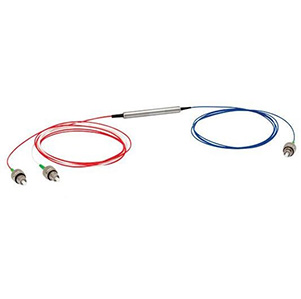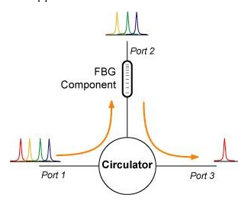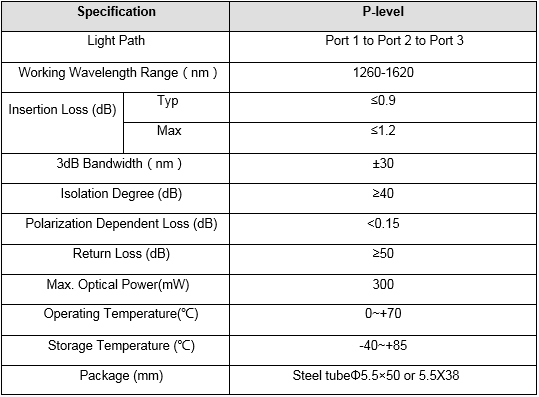Fiber Circulator

Fiber circulator is a three/four port device. Light can only travel in one direction. It is an irreversible one-way three/four port device. Due to high isolation and low insertion loss, fiber circulator is widely used in advanced communication systems, such as bifurcation multiplexers, two-way pumping systems and dispersion compensation devices.
The center wavelength of optical fiber circulator provided by our company is 1064, 1310 (band O) or 1550 nm (band C). In addition, these optical fiber circulator have optional connectors, FC/PC connectors, or FC/APC connectors. Polarization maintaining (PM) optical fiber circulator is also provided.
In the three port circulator, the signal input from port 1 is output from port 2 with low loss; The signal input from port 2 is from Port 3 low loss output. The signal input from Port 2 will cause significant loss in Port 1, while the signal input from Port 3 Will generate significant losses on ports 2 and 1. Due to its irreversible characteristics, it can be used in forked multiplexers, bidirectional pump systems, dispersion compensation devices, or in combination with FBG systems to separate optical channels, and can also be used for single fiber bidirectional signal transmission applications.

As the picture shows: The input DWDM channels are coupled into Port 1 of the device with a FBG device connected to Port 2. The single wavelength reflected from the FBG then reenters the Circulator in Port 2 and is routed accordingly to Port 3. The remaining signals pass through the FBG and exit on the top fiber. Circulator used to drop an optical channel from a DWDM system using a Fiber Bragg Grating.
Application:
Wavelength division multiplexing
Fiber optic sensing
Bidirectional pump
Bidirectional signal transmission
Coaxial coupling dispersion compensation
Specification
Order information
The following are the specification of a single mode three port Fiber circulator. For more information, please consult sales personnel!

The above parameters do not include the joint, and the standard parameter loss with the head increases by 0.3dB.

